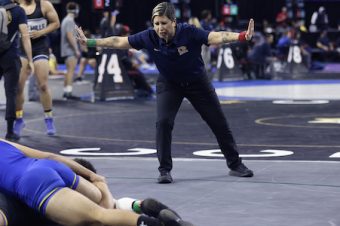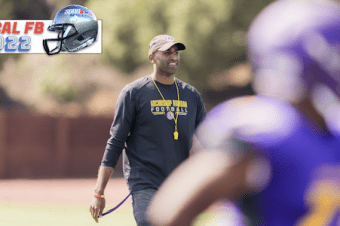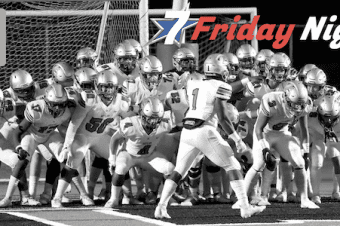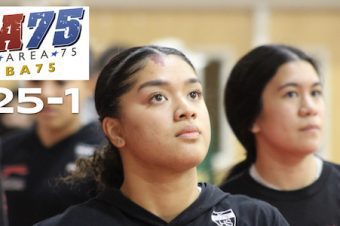Care For A Run?
CalHiSports Insights November 21, 2013 SportStars 0
Cross Country participation can often correlate with personality of the coach.
Cross country is such a great sport. You’re not really competing against someone else most of the time, but against the course, and against yourself. But I see a lot of schools that barely have enough runners to field a team, and then there are other places with nearly a hundred. What’s going on? Why isn’t cross country more popular everywhere?
— J.Y., Oakland
A great question — but I have to flip it for you, based on my own personal experience. Long runs do nothing for me. After about 200 yards, my mind starts turning to various feelings in my body, such as pain in my knees, labored breathing and general discomfort. From there, my mind quickly moves to how much better life would be if I were sitting on the couch watching the Warriors — or even Oprah Winfrey.
Or, to put it another way, my question isn’t why more people choose cross country, it’s why anyone would choose it in the first place.
OK, OK. I’m old and cranky and I’ve always hated jogging, and clearly there are a lot of people who really enjoy slogging up hills at an incredibly slow pace with their features locked into a grimace of agony (sorry, sorry, I’ll do better.)
In truth, cross country is a great sport for a lot of people. It doesn’t require size or strength or athletic gifts; anyone can get out and run two or three miles, and nobody’s going to get cut just because they’re slow. The benefits are there for every runner, unlike team sports where the only people getting exercise in games are the better players.
It’s also a lifelong activity. And acquiring a love of running is going to lead to a healthier, fitter life — and not incidentally, one in which it will be much easier to have guilt-free chocolate sundaes at least once a week.
Obviously, there is a certain percentage of people out there who enjoy running, so one would expect that that percentage would take up cross country at every high school. So, in other words, if there are 1,500 students at two schools, they both should have similar-sized cross country teams.
That, of course, is not the case. Some schools with 1,500 students have 100 runners; others have 10, and a reasonable question is why.
The answer starts with coaching. And in this case, it’s not so much about winning or teaching. Only the top five runners score points in each race, so if there are a hundred runners, only a small percentage are going to “win” in any sense. And teaching? Well, there is some technique in running, but not that much. Even the best cross country coaches don’t spend a lot of time refining form.
What attracts runners, though, is a coach who can make running several miles in the hot October sun sound attractive, and who at the same time makes it cool to run on local streets a couple times a week. So the schools that have a charismatic coach, especially one that’s on campus, are going to attract more runners.
Another factor, oddly, is the percentage of students who want to get into college. Families believe that having a varsity sport on a college application is important, and cross country is a varsity sport that’s good for you — so it combines two positives. So a school with a lot of kids focused on which college they get into will probably find it easier to put together a large team.
And finally, there’s just the random nature of life, and some schools somehow have a tradition of cross country participation that just keeps rolling on — and other schools don’t.
In the end, though, the real advantage to cross country is that it’s intensely individual, and though it might be fun to go out and run with a bunch of other students, and win some meets, it really doesn’t matter. The benefits are there for every individual who can muster up the willpower to run several miles every day regardless of sun, rain, wind, dogs and the potential of a collision with a large metal object traveling 20 miles an hour or more.
I admire those people — from my couch.
Clay Kallam is an assistant athletic director and girls varsity basketball coach at Bentley High in Lafayette. To submit a question for Behind the Clipboard, email him at clayk@fullcourt.com
SportStars
SportStars Magazine: High School Sports Articles Online SportStars is your go-to source for the very best high school sports articles in California. Player and team profiles, game coverage, health and fitness tips and the largest Camps, Clinics & Combine resource for athletes. We're the story behind the stats.










No comments so far.
Be first to leave comment below.